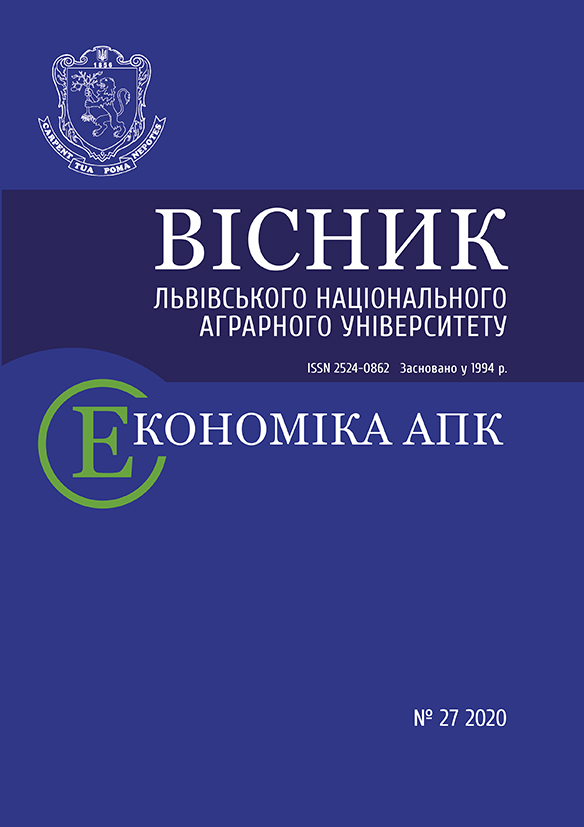Visnyk LNAU: Agronomy 2019 №23: 177-183
Soil science and agrochemistry at the Lviv National Agrarian University through the prism of centuries
P. Hnativ, Doctor of Biological Sciences
ORCID ID: 0000-0003-2519-3235
V. Snitynskyi, Doctor of Biological Sciences
ORCID ID: 0000-0001-9633-1004
Lviv National Agrarian University
https://doi.org/10.31734/agronomy2019.01.177
Annotation
The development of soil sciences and agrochemistry at the Lviv National Agrarian University during the 19th, 20th and 21st centuries has been observed in the article. The names and main achievements of the founders of the scientific school of these knowledge areas that worked in Dublyany have given.
The Department of Agrochemistry in Dublyany, as an independent structure, was established in 1919 under the Ruthenian-Forest Faculty of Lviv Polytechnic. The founder and its first official head until 1923 was prof. Marian Gursky. In 1946, when Dublyany was restored, the higher educational institution - the Lviv Agricultural Institute. Associate Professor Mikhail Borisovich Gilis headed the Department of Agrochemistry. Assistant professor Grigory Andryushchenko, assistant professor came to the department, and since 1952 associate professor Ivan M. Gogolev and others.
The milestones of strengthening and expanding the scientific and material basis of soil sciences and agro-chemistry against the background of the formation of the university have been seen. The date and circumstances of the establishment of a special department have been indicated, the scientific fate of department founder, Professor Marian Gursky, has been described in article. There are described pre- and postwar periods in the development of the Department of Soil Sciences and Agrochemistry, the contribution of its managers and researchers into the science and education of Western Ukraine.
The global significance of soil sciences and agronomic chemistry for maintaining the food security of mankind in the historical context of the growth of human population on Earth is shown. Non-exhausting land use and high yields of food crops are unthinkable without the synthesis, extraction and use of chemical fertilizers. The topical trends and prospects of modern soil sciences and agrochemistry have been analyzed. We have found that the amount of chemical fertilizers, which is fertilized per a hectare of land today, is different in various countries. Nowadays developed countries pay more attention to the introduction of organic fertilizers and the cultivation of environmentally friendly organic products.
Developed countries now pay more attention to the introduction of organic fertilizers and the cultivation of environmentally-friendly organic products. The volume of organic matter entering the soil should grow, as agrarians around the world finally saw the negative impact of purely mineral fertilizers on the ground, both on the position of agrochemistry and on the position of organic farming and eco-nutrition. Systems of precise and micronutrient puffiness of crops will be improved, and fertilizer forms for reaping will change.
Key words
soil, soil chemistry, formation of soil science, development of agrochemistry, synthetic and fossil fertilizers, food, fertilizer systems
Link
- Barabash G. Biographical-bibliographic guide: Lviv State Agrarian University in the names: scientific and teaching staff in 1946-2006. Lviv: Novyj svit, 2006. 390 p.
- Encyclopedia. Ivan Franko Lviv National University. Lviv, 2011. 716 р.
- Hebebrand Ch. Drivers in Global Fertilizer Markets, 2014. URL: https://ec.europa.eu/agriculture/sites/agriculture/files/events/2014/2024-prospects-conference/hebebrand_en.pdf (Last accessed: 25.04.2019).
- Lviv National Agrarian University. Department of Agrochemistry and Soil Science URL: http://lnau.lviv.ua/lnau/index.php/uk/f-s/agro/kgza.html (Last accessed: 25.04.2019).
- National report on soil fertility in Ukraine. Kiev, 2010 URL: http://www.iogu.gov.ua/wp-content/uploads/2013/07/stan_gruntiv.pdf (Last accessed: 25.04.2019).
- Nutrient input per ha of utilised agricultural area, average 2010-2014. URL: https://ec.europa.eu/eurostat/statistics explained/index.php?title=File: Nutrient_input_per_ha_of_utilised_agricultural_area,_average_2010 2014.png (Last accessed: 25.04.2019).
- Roser Max & Ritchie Hannah. Fertilizer and Pesticides. Empirical View. Fertilizer application rates. URL: https://ourworldindata.org/fertilizer-and-pesticides (Last accessed: 25.04.2019).
- Synthetic Chemicals Are Agents of Global Change. URL: https://www.technologynetworks.com/applied-sciences/news/synthetic-chemicals-are-agents-of-global-change-280995 (Last accessed: 25.04.2019).
- Tokarsky Yu. M. Bibliographic Dictionary (1856-1947): Professors, associate professors and assistants of educational-scientific institutions in Dublyany. Lviv: LDAU, 2004. 119 p.
- The introduction of fertilizers by countries of the world in the long-term retrospective, kg/ha of active substances. URL: https://ourworldindata.org/ fertilizer-and-pesticides (Last accessed: 25.04.2019).
- The introduction of mineral and organic fertilizers for the crop of agricultural crops. URL: https://ukrstat.org/uk/druk/publicat/ Arhiv_u/07/Arch_ mod_bl.htm (Last accessed: 25.04.2019).



